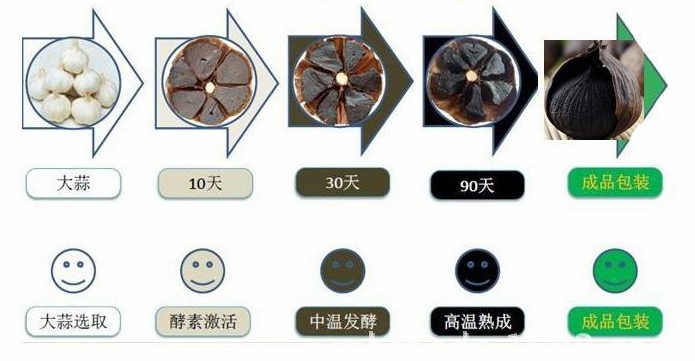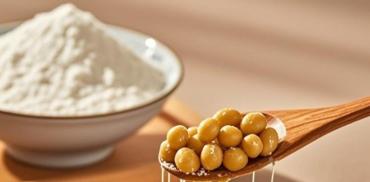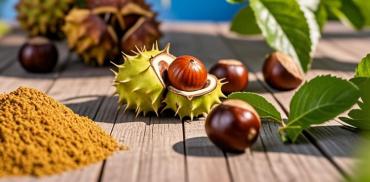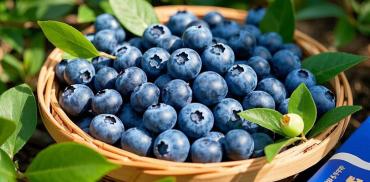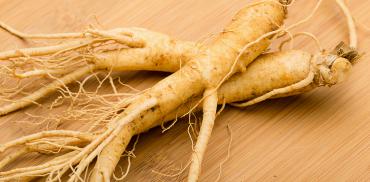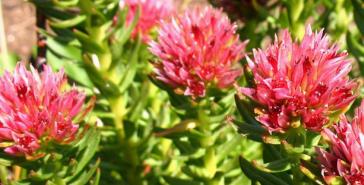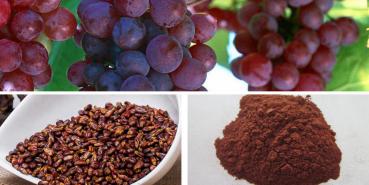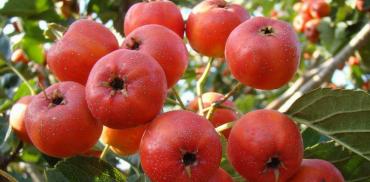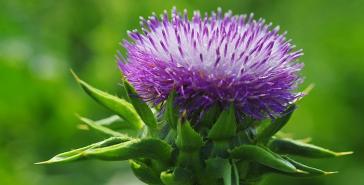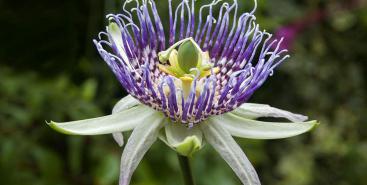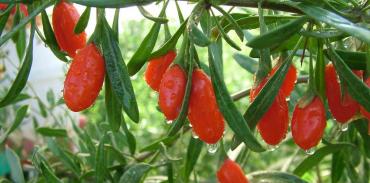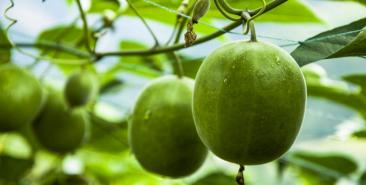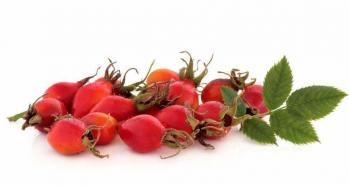What is black garlic?
The process for creating black garlic requires fermenting whole bulbs of garlic at high temperatures for extended periods of time. Black garlic is produced by “fermenting” through the aging of whole bulbs of fresh garlic in a humidity-controlled environment (high humidity (90% RH)) in temperatures of about 140 to 170 degrees F for 60 to 90 days. Even though aged black garlic is considered fermented, it does not in fact involve microbial action, as no fungus or yeast is involved in the aging process. The result is a obsidian clove that’s significantly sweeter and with a mellow and meltingly savory garlic flavor. The texture is squishy and soft, often similar to a gummy candy. The flavor is tangy and sweet.
What is SAC?
During the aging process, unstable compounds of fresh garlic including alliin are converted into stable compounds including the water-soluble compound s-allyl cysteine (SAC). Since s-allyl-cysteine is water soluble, it is absorbed more quickly and easily by the body. S-allyl-cysteine also assists in absorption of the fat soluble allicin. This compound is more stable than allicin.
Function
Antioxidant Activity
The protective activities of SAC have been well studied and have been shown to be associated with the prevention or amelioration of oxidative stress, including the prevention of oxidation of lipids and proteins. While the mechanism of most antioxidant compounds is the quenching of specific free radicals (direct antioxidant effect), the antioxidant properties of black garlic and SACs include a direct antioxidant effect on all biologically-relevant free radicals as well as numerous “indirect” antioxidant mechanisms, making it truly a “Complete Antioxidant.” In fact, aged black garlic showed stronger antioxidant activity in vitro and in vivo than raw garlic due to the safe, stable, bioavailable and beneficial compounds during the natural aging process.
Inhibition of Pro-oxidant Enzymes
SAC has also been shown to inhibit a number of pro-oxidant enzymes, as an imbalance of these enzymes can increase oxidative stress. Nitric oxide synthase (NOS) is a family of pro-oxidant enzymes that catalyze the conversion of L-arginine to L-citrulline to produce nitric oxide (NO). While nitric oxide is an important signaling molecule for a number of physiological responses, increased levels of NO are also associated with oxidative stress and disease by causing damage to proteins, lipids and DNA either directly or after reaction with superoxide. Black garlic and SAC have been shown to help
regulate NOS enzymes, which can help prevent oxidative stress resulting from imbalanced NO levels.4 ,SAC and black garlic have also been shown to inhibit other pro-oxidant enzymes, whose over-activation is related to different patho-physiological events, including xanthine oxidase, NADPH oxidase and COX-2.
Cardiovascular Health
LDL cholesterol isolated from subjects receiving 2.4 g of black garlic daily for 7 days were reported to be more resistant to oxidation than LDL isolated from subjects receiving no supplementation. In a double-blind, parallel randomized placebo-controlled trial involving 50 patients, daily supplementation with 960 mg black garlic (providing 2.4 mg SAC) daily for 12 weeks resulted in reduced systolic blood pressure compared with controls. A 12-week, double-blind, randomized placebo-controlled dose–response trial reported a reduction of mean systolic blood pressure in subjects supplemented with 480 or 960 mg black garlic (containing 1.2/2.4mg of SAC) compared to placebo. In a randomized, placebo-controlled, cross-over design, 2.4 grams/day of black garlic supplementation improved endothelial function. Brachial artery flow mediated endothelium-dependent dilation (FMD) was shown to increase from the baseline. FMD is the most widely used, non-invasive test for assessing endothelial function. Normal functions of endothelial cells include mediation of coagulation, platelet adhesion and immune function, while endothelial dysfunction is associated with a number of cardiovascular conditions. These data suggest that shortterm treatment with black garlic may improve impaired endothelial function.
Summarize
Provides antioxidant support better than raw garlic;
Helps maintain healthy cholesterol levels and blood pressure already in normal rang;
Supports improved immune function by increasing NK cell activity and immunostimulatory activities.
